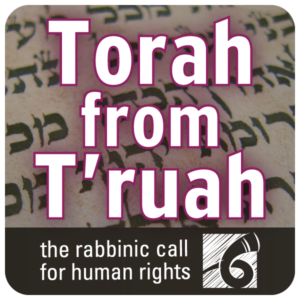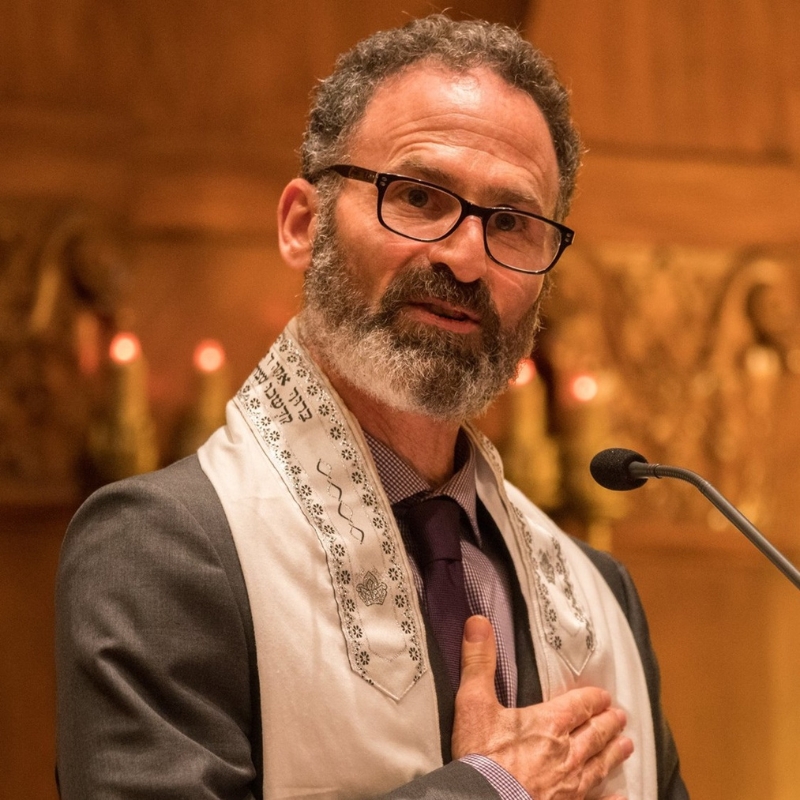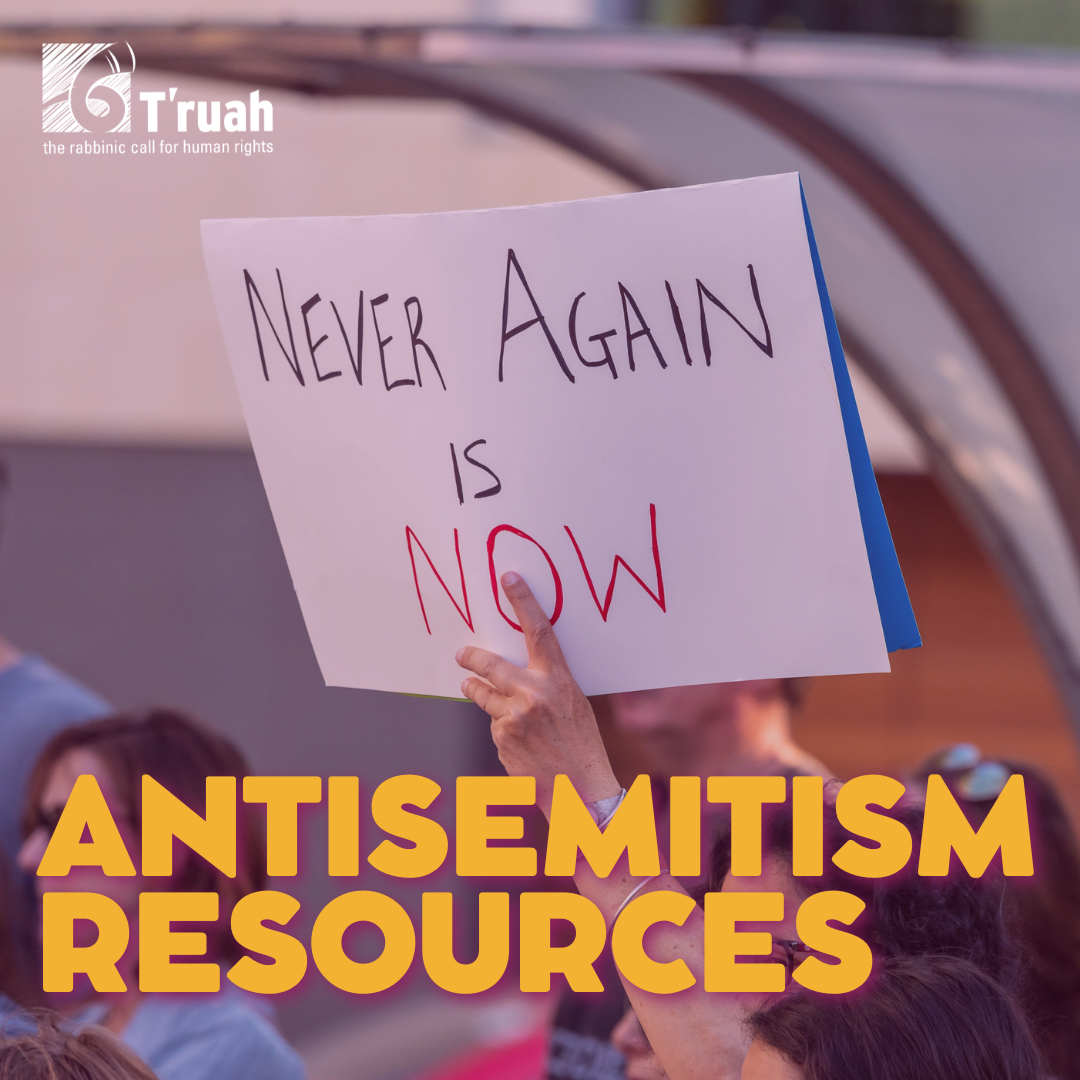Resources

Who Feels the Pain? (Parshat VaEra)
Commentary on Parshat Vaera (Exodus 6:2 – 9:35) Who deserves human rights? Even the Torah has its blind spots. The Torah portion VaEra describes an escalating cycle. As YHWH predicts, Moses and Aaron confront Pharaoh and he refuses to free the Israelites. A plague strikes, and Pharaoh relents. The plague is removed by divine intervention,...
more

On Human Rights Day, Choosing to Remember
December 10 is International Human Rights Day, marking 70 years since the passage of the Universal Declaration of Human Rights on December 10, 1948, seven months after the creation of the State of Israel and one day after the passage of the UN Convention on Genocide. When T’ruah was founded, back in 2002, Rabbi Gerry...
more

Expanding the Birthright (Parshat Vayechi)
Commentary on Parshat Vayechi (Genesis 47:28 – 50:26) This past summer, five participants in a Birthright Israel trip (free 10-day Israel tours offered to young adults) left the tour to visit with Palestinians on the West Bank. Their decision to do so came after receiving a map that made no effort to demarcate the Palestinian...
more

Miracle Of Miracles (Chanukah)
Commentary on Shabbat Chanukah I’ve always had a problem with the familiar Chanukah story, which highlights the Maccabees’ unlikely victory over the Greeks and the kindling of the menorah from one jar of oil that lasted eight nights. “Miraculous war” surely represents a quintessential definition of oxymoron; a jar of oil burning for eight nights...
more

Joseph in the Era of #MeToo (Parshat Vayeshev)
Commentary on Parshat Vayeshev (Genesis 37:1 – 40:23) In Andrew Lloyd Weber’s telling of the Joseph tale from Genesis, Joseph and the Amazing Technicolor Dreamcoat, one of the biggest laugh lines comes when Joseph, sexually pursued by the wife of his master Potiphar, yells out “I don’t believe in free love!” After this, in both...
more

Wrestling With Our Fear (Parshat Vayishlach)
Commentary on Parshat Vayishlach (Genesis 32:4 – 36:43) Alone. Anxious. Curled in the fetal position, recalling and recoiling from the memories of a similar night years before. Scared of what tomorrow might bring. Sure, this sounds like how many of us spent election night. But it is also how we imagine Jacob’s fitful night before...
more

Turning the Tables on Accusers and Abusers (Parshat Vayetze)
Given Jacob’s many troubles, it may seem like the angels who followed him outside of the land of Israel were not doing a good job of protecting him, but they may have given Jacob exactly the support and protection he needed at exactly the right moment.
more

The Binary Brothers (Parshat Toldot)
Commentary on Parshat Toldot (Genesis 25:19 – 28:9) This week’s Torah portion, Toldot, tells the story of twin brothers who were labeled from the moment they were born, and the consequences have reverberated throughout our history. Jacob, the heel-grabbing younger brother who tried to prevent his sibling from emerging from the womb first was the...
more

Isaac, Ishmael, Hebron, and Us (Parshat Chayei Sarah)
Commentary on Parshat Chayei Sarah (Genesis 23:1 – 25:18) וַיִּקְבְּר֨וּ אֹת֜וֹ יִצְחָ֤ק וְיִשְׁמָעֵאל֙ בָּנָ֔יו אֶל־מְעָרַ֖ת הַמַּכְפֵּלָ֑ה… And they buried him [Abraham], Isaac and Ishmael his sons, in the Cave of Machpelah … (Genesis 25:9) Isaac and Ishmael only appear together in one line of the Torah portion Chayei Sarah, when they meet in Hebron to...
more

Is Three a Magic Number? (Parshat Vayera)
Commentary on Parshat Vayera (Genesis 18:1 – 22:24) This edition of Torah from Truah is sponsored by Dale Gardner in memory of her sister Rhonda Kolarik. “Three is a magic number.” One can surely ascribe meaning to almost any number or any letter of the alphabet. But let’s consider the number three for a moment....
more



